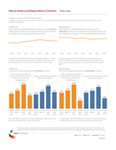Bester, San Francisco efforts receive Jim Casey Building Communities of Hope Awards
These awards recognize communities working together to improve the safety and success of children and their families.
These awards recognize communities working together to improve the safety and success of children and their families.

This data overview looks at trends for American Indian/Alaska Native children in care nationally, and in California and Washington.
Striving to keep children safe at home, Circles of Support combines evidence-informed interventions within a culturally relevant context.
Learn how a foster parent and parent partner worked together to wrap supports around a birth mother so she could reunify with her child.
This short video describes how child welfare agencies can operationalize the four tiers of family engagement.
These brief videos talk about why it is important to recognize the strengths within each family.

Learn about a program that exposes college students in foster care to professional opportunities through workshops and individual mentoring.

Dr. William C. Bell provided the keynote address at the Ujamaa Place annual fundraiser on October 11, 2018.

This report confirms kinship care as a preferred option for children when they cannot stay with their biological parents.
Scott Modell, Noel Hengelbrok, and Michael Cull introduce the concept of safety science and offer ways child welfare can respond differently to create a safety culture.